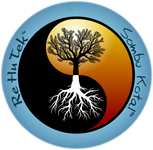
For centuries the ‘masters’ have pointed to meditation as THE way toward body, mind, spirit harmony, as the answer to most questions about HOW to be happy, healthy, and successful. It seems simple but, as any meditator can attest, is challenging to master. Simple techniques for meditation can be very frustrating. Why? One reason is because we often have unrealistic expectations about meditation.
You wouldn’t expect to try Yoga once and be able to stretch into postures requiring full flexibility and strength. But many spiritual aspirants think they can master meditation immediately. In fact, it is quicker and easier to master muscles than mind.
From Consciousness to Superconsciousness
Meditation is moving from consciousness to superconsciousness. By mastering meditation you master body, mind and emotions. Spiritually, meditation takes you to expanded awareness of the cosmic mind, i.e. God. The Buddha said “All that we are is a result of what we have thought.”
Being able to choose the way we think and feel, then, becomes the most important goal of our lives. Mastery of mind means mastery of fate. The Bible reads “Be still, and know that I am God.” The “Be still” part is meditation. Meditation, say the masters, can open the doors to “God.”
Control Over Mind and Emotions
You may believe you’re already in charge of your mind and emotions. Unless you’ve been at it a long time, or you are a rare individual, that’s unlikely. Most of us live in a world of false confidence, living at the mercy of whims and passions. We get angry, possessive, territorial, jealous, smug, vengeful, or hurt. We feel guilt, unhappy, or lonely. On the other side we feel joyous, happy, giddy, playful, generous, sympathetic or confident.
These emotions are thrust on us by the outer circumstances in life and we are buffeted from one emotion to another without much choice. Yet mastery of our inner lives is something that humans intrinsically yearn for and strive for.
When we first try to meditate it becomes apparent that we seldom think thoughts, but our thoughts think us. Try to stop a craving, a desire, or a response to a situation and you’ll find it tougher than you expected. Our thoughts are always competing for attention so we are pulled here and there around and around.
As a child we learned to tell our body how to move and when; we never learned the same control over mind/emotions. But with that control, our consciousness and creativity are expanded. This can only lead to a successful life. Richard Bandler, cocreator of Neuro-Linguistic Programming said, “Emotional problems aren’t because we can’t learn, but that we learn too easily. We have no control over what the mind takes in and it learns behaviors and responses willy-nilly.”
Great Artists
If the word “control” is distasteful and you ask what about spontaneity, creativity, and personal expression, think about great artists. Any great artist, whether painter, musician, sculptor, or dancer, is great because he or she first learned control and discipline, then true creativity followed.
Even Maria Callas, opera diva, started by practicing vocal scales. Barysnikov, famous ballet dancer, started with drills of tedious exercises and disciplined routines. Picasso began by learning perspective and the rules of visual balance. Cellist Pablo Cassals started by learning musical notation and where to put his fingers on the cello.
The Spiritual Masters
The spiritual masters of the world also arrived at mastery through learning control and discipline. Ghandi, Buddha, Theresa of Avila, Yogananda, and Ram Dass are a few who strove to master mind and emotions, and succeeded. Through this control process, we are able to move through life with ease, peace, power, and grace.
Many Types of Meditation
Meditation is a key to teaching the mind to obey our will thus opening the way for expanded consciousness, peace of mind, personal power, joy and fulfillment. There are meditations that teach control of breath and/or body such as yoga, tai chi, Sufi dancing, and pranayama. Other meditation techniques use sound, such as mantra, toning, chanting, internal voice, or toning. Some work through imagery such as candle meditations, or internal imagery. And, there are meditations that combine some or all of these processes.
All of the methods, however, work on the same structure—creating one-pointedness of mind. Freeing the mind of distractions and ordinary thoughts opens the mind to receive expanded frequencies of consciousness.
An enlightened Tibetan, Chogyam Trungpa said, “The epitome of the human realm is to be stuck in a huge traffic jam of discursive thought.” Meditation isn’t the goal; it is the tool that helps us move away from the prison that our inability to control our thought keeps us in.
Re Hu Tek and Meditation
There are many tools to teach us meditation and one powerful tool to help you speed up the process of entering into a meditative state is the newly rediscovered transformative energy of Re Hu Tek™.
Re Hu Tek™ is an ancient/new Egyptian energy healing force that some are calling Reiki on steroids. An attuned practitioner can use it to more easily and quickly enter into deep meditation states. Using the Re Hu Tek™ during meditation allows you to enter into deeply focused states of mental concentration and clarity.
Re Hu Tek™ won’t make us saints or gurus but it is a powerful tool for more quickly taking meditation to a deeper level.

